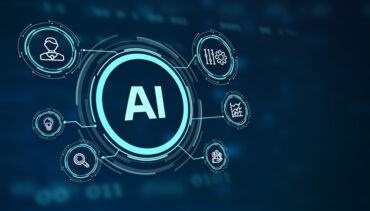
A vastly different world is rising up around us. A new Accenture survey finds that the boldest, most visionary leaders – those who use technology to master change – will define the future.
Amidst the turmoil of the last few years, the notion that “every business is a technology business” has never been more apparent. Technology kept the world running, helping businesses minimize the disruptions of a global pandemic, and did so at a breath-taking pace. In fact, 92% of business and IT executives surveyed by Accenture report that their organization is innovating with an urgency and call to action this year to handle such change.
That was just the start.
All around us, digital transformations that had been expected to take years to materialize are now underway: industry convergence, localized supply chains, mass virtualization, and continuously changing customer expectations, to name a few. Past mindsets, modes of living and working are long-gone, and we are now moving to a future that will look and feel profoundly different from anything we’ve ever experienced.
A unique opportunity
That leaves us with a very particular and very promising set of circumstances. On the one hand, we have businesses that are newly armed with digital building blocks capable of creating almost anything. On the other, nearly every industry is now looking to the future as a blank slate and waiting for a new vision to be defined.
Combined, these circumstances present a once-in-a-generation opportunity. Businesses that can become masters of change have an unprecedented chance to shape the future of their industry and to help build the human experience of tomorrow. To achieve this, enterprises will need to maintain a sharp focus on their expedited digital transformations, reimagining everything from their people to data, architectures, and ecosystems.
In our world of perpetual change, leaders must do more than simply embrace change, and they need to catalyze it. Rather than waiting for the new normal to arrive, leaders are building it, using radically different mindsets and models than their peers. The leaders of today and tomorrow are also expanding the definition of value beyond financial returns to consider how their use of technology benefits communities, individuals, and the world as a whole.
See also: Adopting Digital Transformation? Prioritize People
Five technology trends
Accenture’s latest Technology Vision report, “Leaders Wanted: Masters of Change at a Moment of Truth,” goes deeper into the opportunity facing businesses in the years ahead and how they can position themselves to lead. Based on extensive research, the report outlines five key trends that will help leaders deliver what they need to define their industries’ future: a digital-first approach that is fostered by the entire C-suite and manifested across all areas of the organization. The trends are:
- Stack Strategically: Architecting A Better Future – The exponential growth and availability of new technologies have ignited a new era of business – one where architecture matters more than ever, and industry competition is a battle between technology stacks. But building and wielding the most competitive technology stack means thinking about technology differently, making business and technology strategies indistinguishable.
- Mirrored World: The Power of Massive, Intelligent, Digital Twins – The next frontier for digital twins is here, accelerating at hyper-speed due to the impacts of the pandemic, as well as rapid technology advancements in IoT, modeling, Cloud, and Edge Computing. Agile, scalable, and dynamic workplaces are needed now more than ever, and intelligent digital twins support these requirements by providing the data and visualizations needed to make more rapid and flexible decisions.
- I, Technologist: The Democratization of Technology – Natural language processing, low-code platforms, robotic process automation, and more are democratizing technology, putting powerful capabilities into the hands of people all across the business.This adds a grassroots layer to enterprises’ innovation strategies, empowering the people close to day-to-day business problems to create technology-driven solutions.
- Anywhere, Everywhere: Bring Your Own Environment – It’s time to transform remote work from an accommodation to an advantage by rethinking what the organization looks like and what it can achieve with a virtualized workforce model. Leaders must develop “bring your own environment” strategies, addressing the security ramifications of remote work, necessary cultural shifts, and the evolving purpose of physical office space.
- From Me to We: A Multiparty System’s Path Through Chaos – COVID-19 made it clear that companies can’t navigate through uncertainty alone, exposing what had been left undone with enterprises’ existing ecosystems. Multiparty systems can help businesses gain greater resilience and adaptability; unlock new ways to approach the market; and set new, ecosystem-forward standards for their industries.
A vastly different world is rising up around us. Exactly what this world will look like is not yet clear. But what is certain is that the boldest, most visionary leaders – those who use technology to master change – will define the future.





























